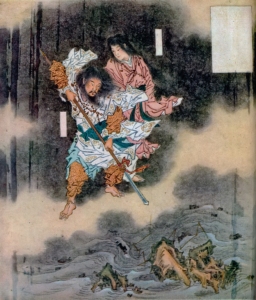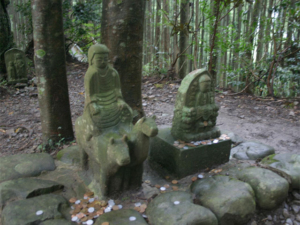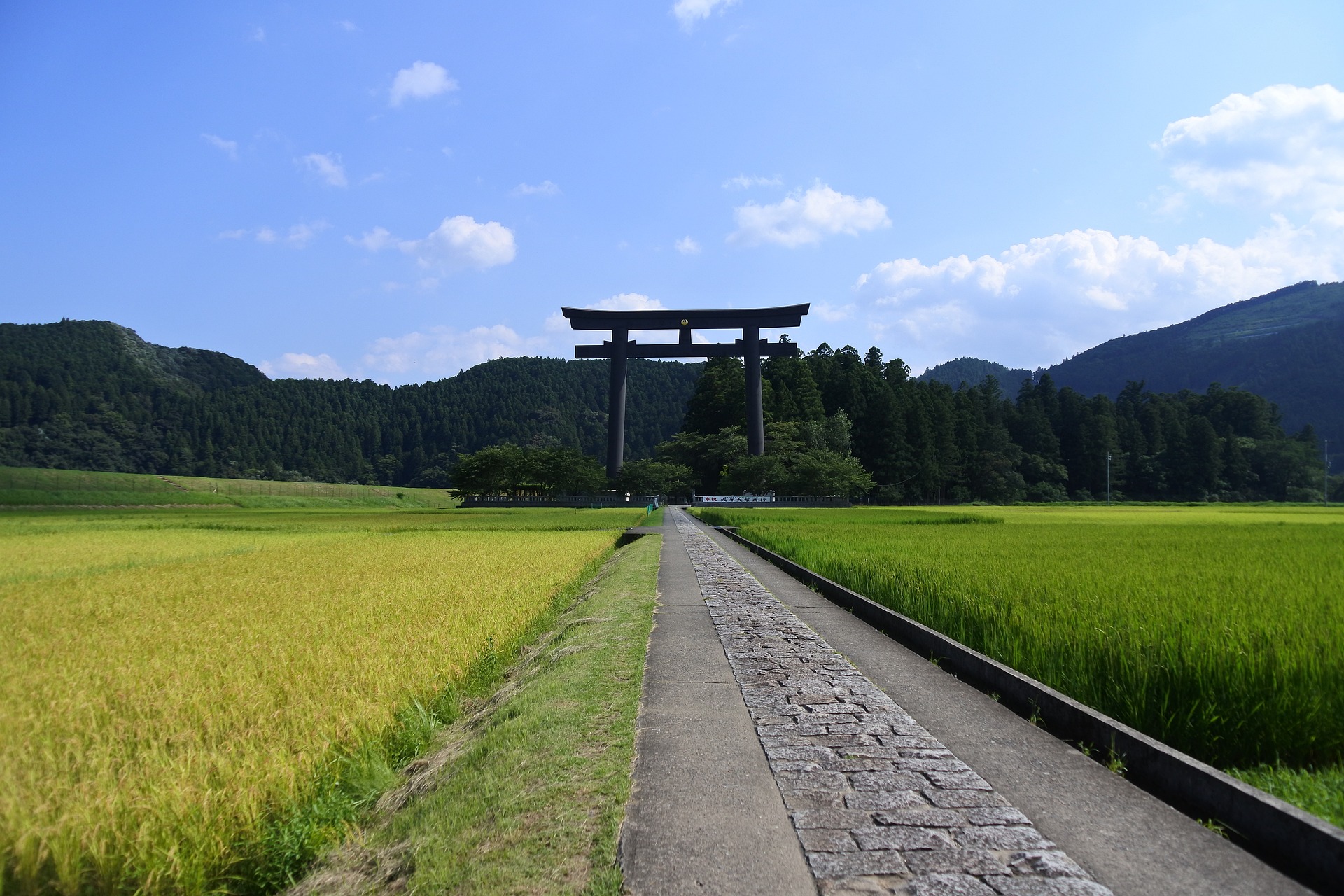Some statistics claim that more than 200 million people go on pilgrimages every year, to at least 40 different destinations deemed holy. But only two pilgrimage paths in the globe have been declared World Heritage Sites by UNESCO. Both are proven to be at least more than a thousand years old, both form an extensive network of routes, and both have shaped the religious and cultural landscape of their respective countries. One of them is the Camino de Santiago. The other is the Kumano Kodo, in Japan.
Shinto and Buddhism are the two major religious traditions of the Japanese islands. Shinto is as old as Japanese culture itself, while Buddhism was introduced from China in the 7th century AD. These two traditions have thus coexisted, influenced, and shaped each other for thirteen centuries –a coexistence that has gone through occasional periods of tension.

Shinto has its roots in prehistoric times, being the indigenous religion of Japan. Also known as the Way of the Kami, it is regarded a “nature” religion. Being polytheistic and animistic, it revolves around supernatural entities found present in nature. These entities are called kami and are believed to inhabit all things –mainly forces of nature and prominent locations like waterfalls, mountains. As Shintoism intends to live in harmony with these entities, purification rituals are fundamental.
Although different in many ways, Buddhism also includes purification rituals, and has a distinctive understanding of harmony. This is one of the reasons why it has coexisted with Shinto, to the point that many Japanese include practices from both religions in their daily lives. However, Buddhism was occasionally persecuted or relegated as “foreign” in favor of Shinto.
Shinto and Buddhist pilgrimage routes
There are three major pilgrimage routes in Japan: Shikoku Henro, Dewa Sanzan, and Kumano Kodo. While the first two are more closely associated with Buddhism, the third is distinctly different: it is not entirely Buddhist nor fully Shintoist, but kumano –a synthesis of Shinto, Sugendo, and Buddhism.
The Shikoku Henro is a circuit on the island of Shikoku. It is a circumambulating pilgrimage route –that is, it is circular-shaped, and pilgrims walk through 1200 kilometers around the 88 temples in which the 9th Buddhist monk, calligrapher, and poet Kobo Daishi is believed to have trained and lived.
The Dewa Sanzan, also known as the Route of the Three Sacred Mountains, is closely associated with some ascetic schools – specially from Sugendo. Sugendo is a highly syncretic body of ascetic buddhist practices that originated in the pre-feudal period of Japan and evolved during the 7th century from an amalgamation of doctrines and ritual systems drawn from local folk religious practices, Shinto mountain worship, and Buddhism. Shugendo practitioners (“Shugenja”) perform religious training while climbing steep mountain ranges.

Of the three routes, Kumano Kodo is the most popular Japanese pilgrimage path, both inside and outside of the country. Located on the Kii Peninsula on the main island (Honshu), it has been walked by people of all social extractions, ages, and walks of life –from emperors to poor serfs. It is dotted with both Buddhist and Shinto temples, in an admirable religious synthesis that has been maintained even in the most difficult times.
But where is it, exactly?
The Kii Peninsula is an extraordinary place on the main, central Japanese island –Honshu. Its breathtaking scenery includes mountains, waterfalls and dense coastal forests. It is no wonder that it has been considered sacred for thousands of years, as kami have been worshipped and nurtured here for thousands of years. The Kumano Kodo connects the three great Kumano shrines, all through the Wakayama Prefecture.
The first of the three great Kumano shrines is the Hayatama Taisha, a temple dedicated to Kumano Hayatama no Okami, also known as Izayama no Mikoto, a Shinto deity associated with the creation of the world, purification and protection.
The second shrine is Kumano Nachi Taishi, famous for its imposing red pagoda and the Nachi Waterfall, considered one of the Three Holy Waterfalls of Japan. It is dedicated to Fusumi no Kami, a deity associated with rain and fertility.
The third is Kumano Hongu Taisha. Being the oldest one, it is dedicated to Kumano Gongen, a Shinto deity who represents the union of the spiritual forces of the other two shrines. He is thus associated with transformation and enlightenment.
What is the meaning of Kumano Kodo?

For Shinto and Buddhist believers in Japan, a pilgrimage to Kumano Kodo is a meaningful walk: as Shinto deities are considered to be emanations of Buddha and kami, walking through these breathtaking natural landscapes imply being surrounded by powerful spiritual entities. The Kumano Kodo thus that allows pilgrims to relate to them while purifying themselves and seeking enlightenment. But it also preserves Japan’s cultural heritage, including ancient shrines, pagodas, and temples, traditional villages, and ancient customs. It is, if you will, a journey into the very soul of Japan.
Today, the Kumano Kodo and the Camino de Santiago are twinned. Both share the double pilgrimage accreditation. To get it, pilgrims need to have the Compostelana (that is, walk at least the last 100 kms leading to Santiago) and to cover of the “mandatory routes” of the Kumano – walking the distance that separates at least two of the three main sanctuaries.





